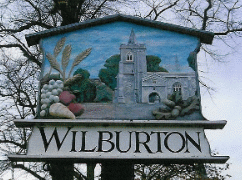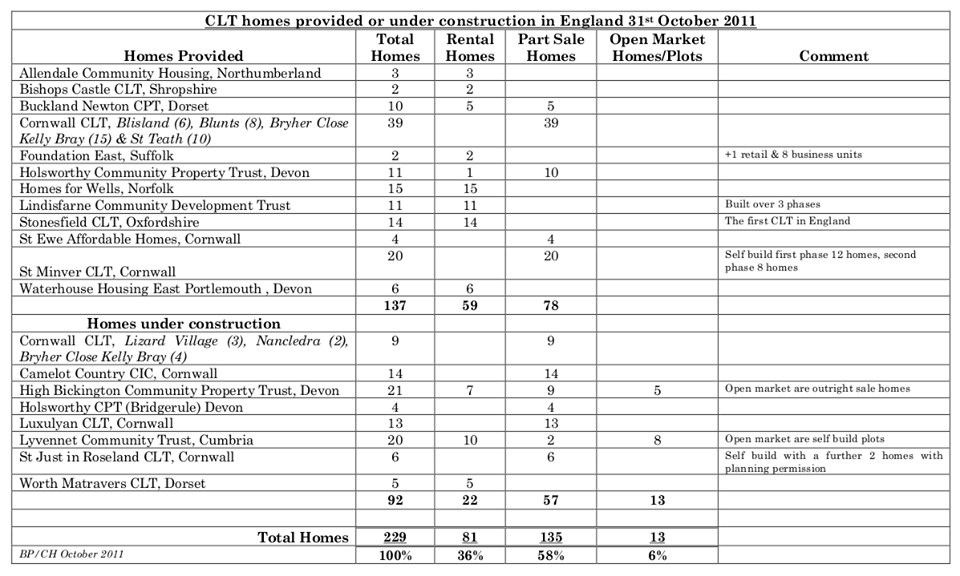CLTs, ECDC Planning and Other CLTs

From the outset, at the Public Events, questionnaires have been biased in favour of the scheme in Camps Field. Furthermore, attendees were met with rehearsed scripts, a lack of any real clarity on several of the information boards and a surprising lack of local knowledge from the developer and their architects. These are the hallmarks of a developer led proposal (as opposed to Community led) but in the guise of a Community Land Trust plan to ensure favourable treatment by the planning authorities despite the land being outside the development envelope. This, and an approach aimed at “getting people on side” is similar to that used during the Mereham public consultations and known to have happened at other CLT consultations in the East Cambs region.
East Cambs provide a Supplementary Planning Document regarding Community-Led Development which can be used to "provide further guidance for development on specific sites".
The currently adopted Local Plan includes the following guidance regarding Community-led development (Local Plan Policy GROWTH 6: Community-led development):
The District Council is generally supportive of community-led development. This may include schemes involving affordable housing, small business units, renewable energy generation and other appropriate uses.
The non-housing elements of schemes will be assessed against other relevant Local Plan policies. However, the District Council will also expect schemes to broadly accord with criteria 5 and 6 below.
The affordable housing elements may be permitted outside development envelopes as an exception to the normal policies of control where:
1. The site is well related to a settlement which offers a range of services and facilities, and there is good accessibility by foot/cycle to those facilities.
2. No significant harm would be caused to the character or setting of the settlement and the surrounding countryside.
3. The scale of the scheme is appropriate to the location and the level of identified local affordable housing need.
4. The scheme incorporates a range of dwelling sizes, types and tenures appropriate to identified local need.
5. The District Council is satisfied that (i) the scheme was initiated by, and is being led by, a legitimate local community group such as a Parish Council or Community Land Trust and (ii) the scheme has general community support, with evidence of meaningful public engagement.
6. It can be demonstrated that the scheme will be well managed and financially viable over the long-term and that any benefits provided by the scheme can be retained by the local community in perpetuity; and
7. The scheme accords with all other policies of the Local Plan. An element of open market housing on the site will only be acceptable where:
- It is demonstrated through a financial appraisal that this is essential to enable the delivery of affordable housing or other community benefits on-site; and
- The community benefits of the scheme (such as the level of affordable housing or open space) are significantly greater than would be delivered on an equivalent open market site.
SWCLT have so far failed to demonstrate that conditions 2, 3, 5(ii) and 7 have been met. In particular 5(ii), has not been complied with given that “general community support” is far from evident. At the second Public Event, when results from the questionnaires were published, it became clear that the results from only 70 forms were shown. Subsequently it emerged that e-mailed comments sent in after the event (because the SWCLT ran out of printed forms and their forms stated they could be emailed in) were not included in the figures. The margin for "support" / "not support" is too small to omit any results, so the statistics they presented are meaningless - and in any event, the questions asked did not relate to the details of the scheme, but about the suitability of the site.
Click on the titles below to expand.
The main community benefit being proposed originally appeared to be a new recreation ground - something the village has already had for well over 100 years in a fantastic setting amongst oak trees. It is now used by flourishing cricket and football clubs, as well as community events like the beer festival and fireworks. Plans are well advanced to further improve the existing recreation ground to encompass additional sports. And potential tax and leasehold restrictions could prevent SWCLT from offering the Parish Council any additional benefit compared to that already on offer with the current arrangements.
A recent Parish Council meeting highlighted the costs that can be involved when preparing legal paperwork or making planning adjustments - something that neither the SWCLT or the PC are likely to be able to easily fund. The Chair of the Parish Council has written regarding his own wishes for the land to become meadows, and has stated he does not wish to see the recreation ground moved from the current location.
So there would now appear to be little "community benefit" on offer, other than a large number of houses, and some orchard and meadow land located some distance from the heart of the village - past existing recreational facilities. These existing facilities should not be relocated to provide a reason to build, as that would take away the heart of the village. Any income from the housing is likely to be many years away, and given the stance of ECDC to profit from CLT development, also potentially ploughed into yet more building.
In the Stretham CLT scheme, a major Community Benefit was to have been a new Doctors Surgery. This, and planned light industrial units are still awaited, and the land has been redesignated for housing as the planned number of houses has grown. It is likely therefore, that any Community Benefits for Wilburton – even if they could be demonstrated – would be years away. In addition, the location is not central, would be unsuitable for large events (the developers idea of "parking for fireworks" showed a complete lack of interest in the community).
Update after the pre-submission presentation - the architect discussed the football pitch and associated building - and confirmed that these would only be "if the community requested them". As the community has shown it's support for the plans to improve the existing recreation ground, in use in this village for over 100 years, it would seem these may not be neccessary. This leaves the question of what is the benefit? A meadow (unusually in the Fens - with long, extremely dry spells of weather, it may well be weeds) and an orchard. Do they consistute a benefit above and beyond the large development into open countryside, with extra traffic and pollution and pressure on what little infrastructure we have? It should be highlighted that this development could ultimately result in the loss of parking for the fireworks, in which case the event (which running for over 40 years) could be lost - as will the funding it provides to many organisations in the village. That would not appear to be a benefit.
Examples of other Rural CLTs are given on the Rural CLTs section of the National Community Land Trust Network - where truly affordable houses are built for the community often by the community. The majority appear to have little or no open marketing housing element.
High Bickington CPT is highlighted as one with open market housing:A 3-phase development will provide 16 affordable homes and 23 open market homes; 6 workspace units; a woodchip fuelled district heating system to serve the whole development; a new community building and replacement primary school; open space, including a playing field, allotments and community woodland and a potential site for a new health centre.
That is 40% as affordable housing - plus many other obvious benefits, including a replacement primary school.
Locally Swaffam Prior CLT is also included, they identified 13 households wre in need of help to continue to live locally, and a development of 20 houses was agreed upon including 8 affordable homes - that again is 40% affordable. SWCLT are proposing 30% - the legal minimum - alongside a large open market development.
The figures below show the numbers of CLT homes provided or under construction in England to October 2011. This clearly shows the developments are typically small, containing no or very few open market houses. A more recent set of figures also shows a similar trend (source). If Wilburton gets a large development of 120-150 houses, then this single site will provide more than the total number of completed open market housing for CLT developments nationally.


Cottenham CLT, our nearest non-ECDC controlled CLT, are aiming to provide 80% affordable housing, 20% market houses - as South Cambs did not alter the rural exception site policies to favour CLT development. As the CTL is looking to own the land, and hence the full development, all proceeds from the market houses go to them, and not the land owner or developer.
Next: Affordability